
BAR with pistol grip and Cutts compensator
First, the pistol grip; the American FBI realized this right away and added them to their Monitor BARs with a Cutts compensator on the barrel end to ward off muzzle climb. These machine guns were used to ambush and gun down gangsters Bonnie & Clyde.
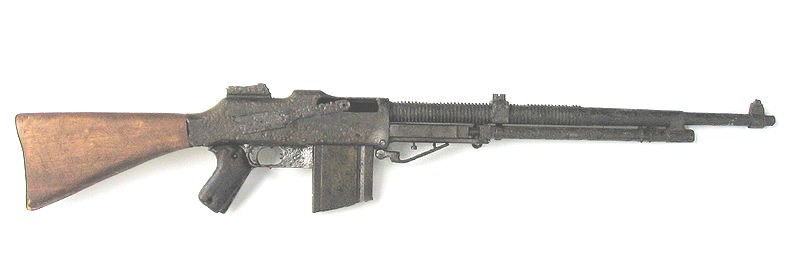
Polish BAR with pistol grip
The Poles, Swedes and Belgians all added pistol grips to their BARs. The stupid American Army and marines in love with deer hunting rifles did not until after losing thousands of men in WW2 and Korea due to being ambushed and losing on the draw.
Quick-Change Barrel on the BAR?
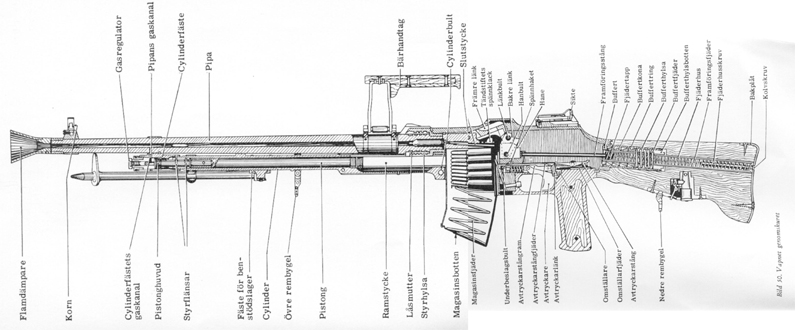
Why not modify American BARs to have a quick-change barrel and carry case for an extra barrel–like the Swedish/Belgians BAR versions and Army employed?
![]() www.youtube.com/watch?v=WxrSPmUkIEY
www.youtube.com/watch?v=WxrSPmUkIEY
http://home.comcast.net/~sfischer397/swedishbar/index.htm

Swedish BAR with pistol grip and Quick-Change Barrel
In 1935, the Swedes came up with a clever solution to modify the BAR for quick-change barrels. The Swedes added a quick change mechanism on to the front of the receiver that utilized the existing receiver barrel threads. The new quick change barrel would slide inside the new mechanism and would lock into place via and interrupted thread. The cleverness of the design allowed existing m/21 BARs to be converted to the new quick change arrangement. The change was officially adopted as the Kg m/37 and Carl Gustafs began production of this type. Many of the existing Kg m/21 BARs were converted to m/37 (as was mine). Production of Kg m/37 BARs totaled 15,398 when production ceased in 1944.

Belgian BAR with pistol grip and Quick-Change Barrel
In 1932, Belgium adopted a new version of the FN Mle 1930 allocated the service designation FN Mle D (D-Demontable or “removable”) which had a quick-change barrel, shoulder rest and a simplified take-down method for eased cleaning and maintenance. The Mle D was produced even after World War II in versions adapted for .30-06 Springfield and NATO-standard 7.62x51mm ammunition.
YOUTUBE channel owner “Mongo63a” shows how this was done.
http://home.comcast.net/~sfischer397/swedishbar/qcb.htm
The Swedes modification to the standard BAR receiver is very ingenious. It corrects one of the main complaints about the BAR when it is used in the Squad Automatic Weapon (SAW) role, that of not having a quick change barrel. This way when the barrel gets hot it can be changed for a spare cool one.
Barrel changes are easily made by:
-
Bolt cocked back on the sear.
-
Rotate the barrel release lever from the 3 o’clock position to the 6 o’clock position.
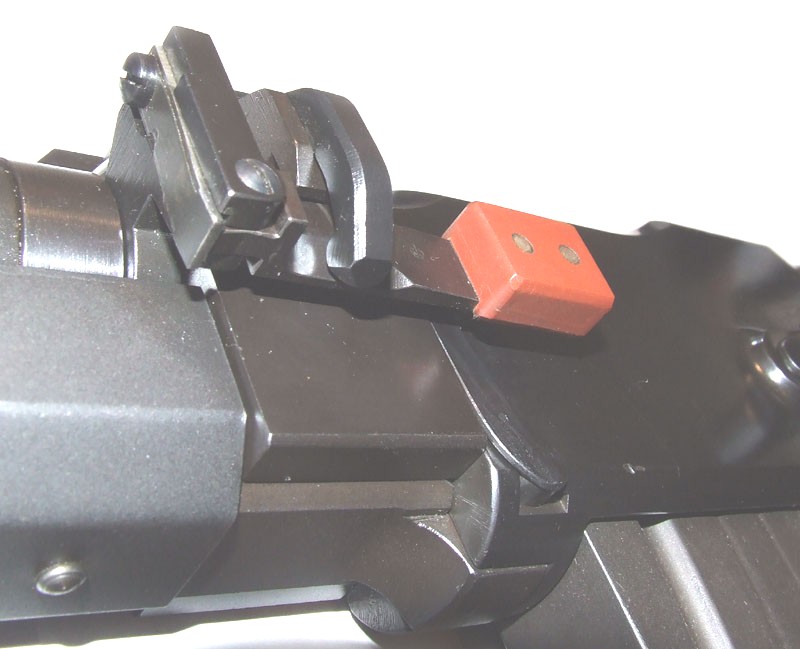

- Lift the barrel release lever until it reaches its stop.
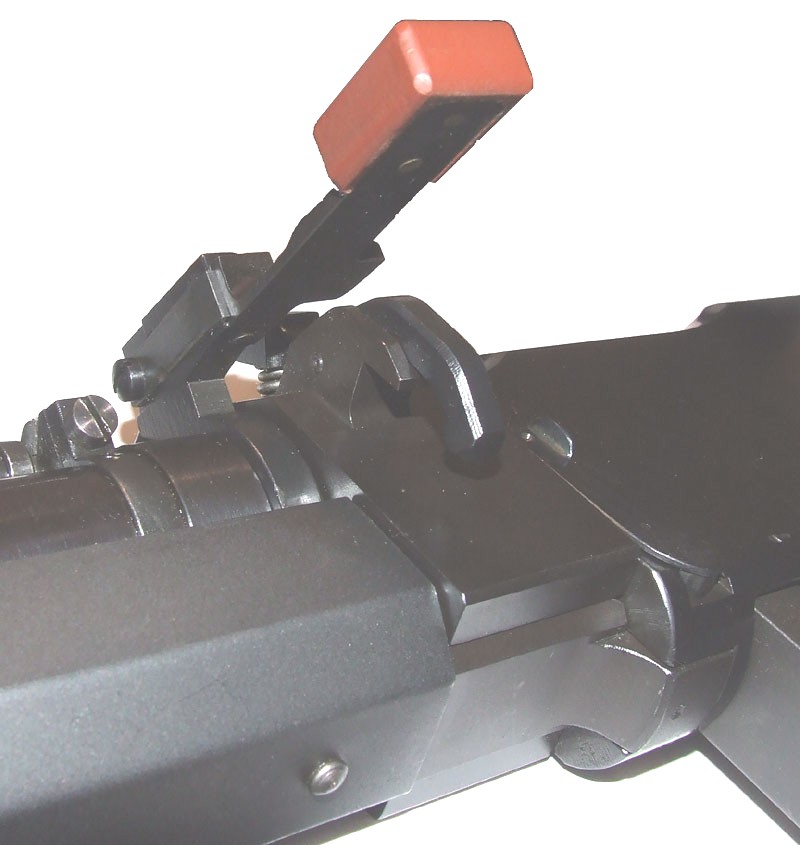
- Grasp the barrel carry handle and push forward while holding onto the gun and remove the barrel.
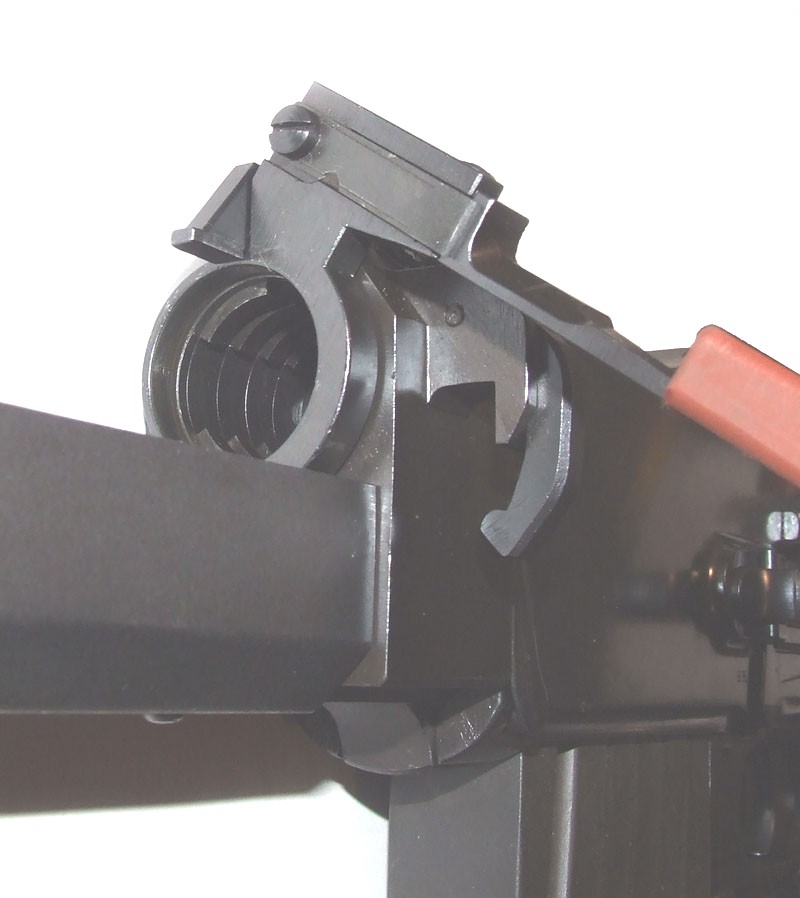
- To install the barrel reverse the procedure.
What about a drum for the BAR like the MG42 had?
The Polish Air Force had them!

Polish Air Force BAR with 91-round pan magazine
France[edit]
The MAS mle 1922, a French prototype copy of the BAR.
In 1922, the French Army considered the introduction of the BAR or of the Fusil-mitrailleur MAS modèle 1922, a copy of the BAR produced by the Manufacture d’armes de Saint-Étienne. The FM 24/29 light machine gun was eventually adopted.[33]
France
Poland
Sweeden
Belgum
China




